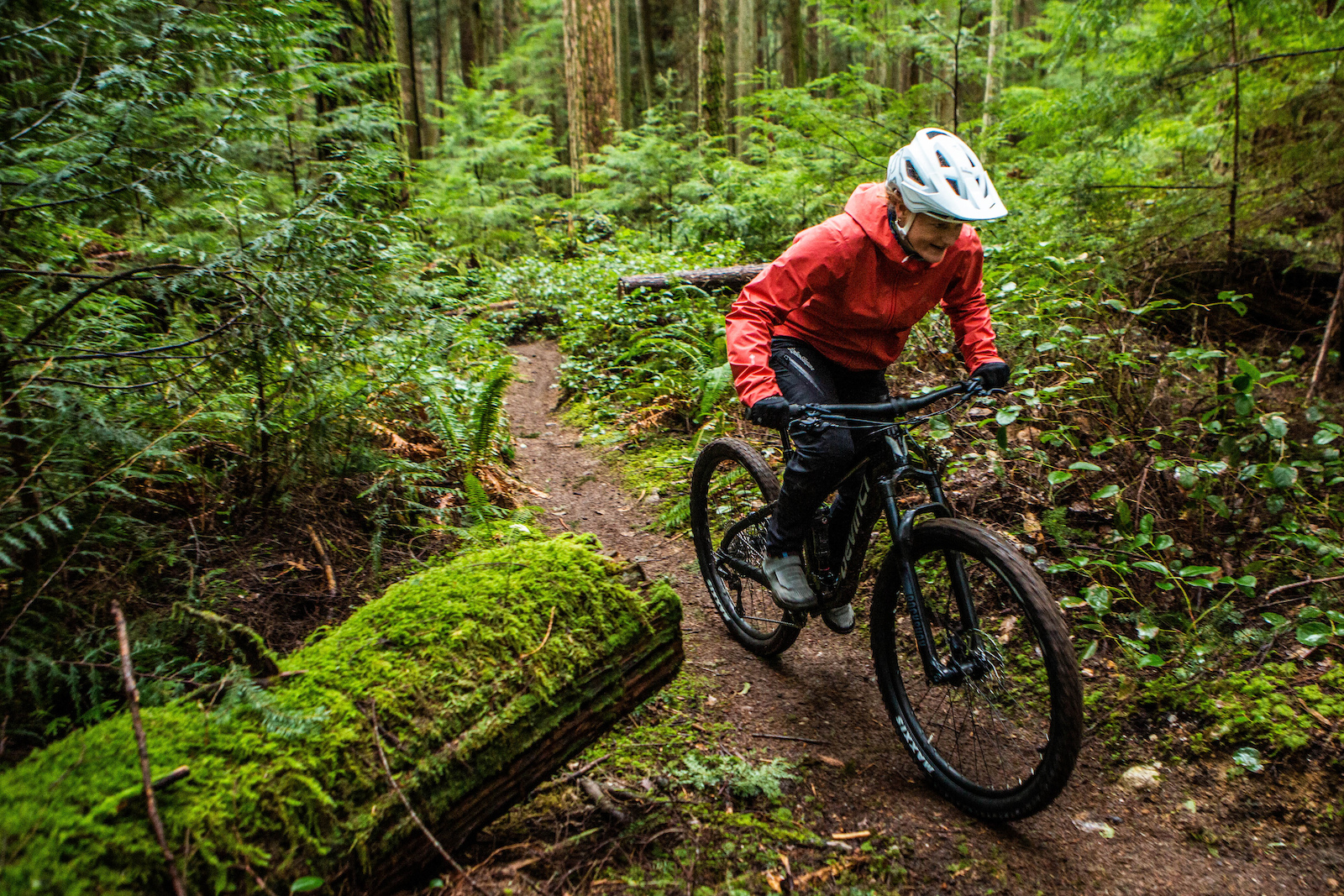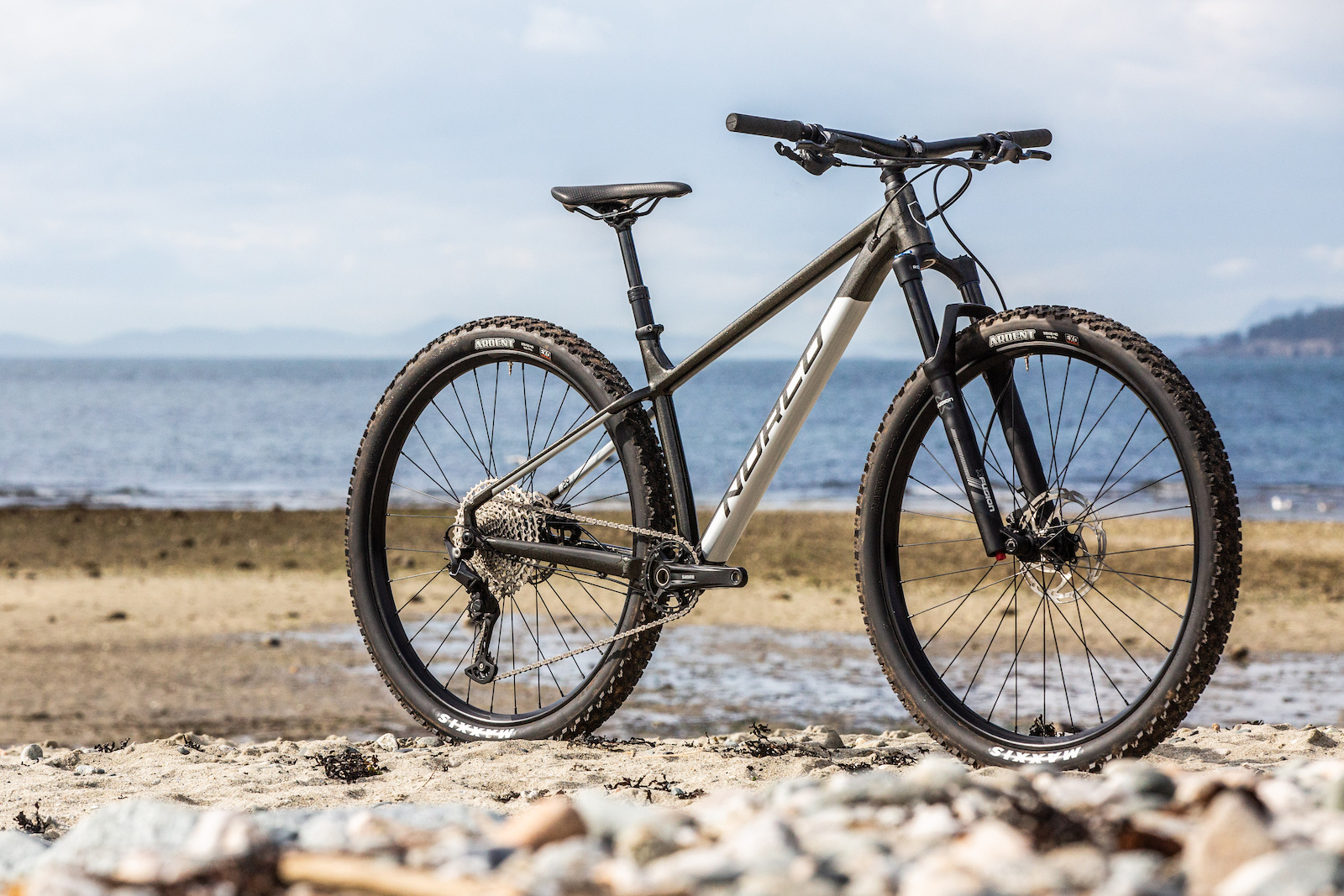Field Trip: 10 Value Bikes Face the Efficiency Test
PINKBIKE FIELD TEST
10 Value Bikes Face the Efficiency Test
Gravel roads, power meters, a dose of pseudo-science, and no lock-outs allowed.
10 Value Bikes Face the Efficiency Test
Gravel roads, power meters, a dose of pseudo-science, and no lock-outs allowed.
Not all of our ten value test bikes were designed to be cross-country efficient, but that doesn't mean that how they climb shouldn't matter to you. On any given ride, unless you've got a chairlift or a sweet shuttle vehicle, the proportion of time spent climbing will greatly outweigh the time spent descending.
In other words, even if the whole reason you're climbing is to get to that sweet singletrack descent, it's a good idea to consider how well-rounded your choice of steed is for the times when gravity isn't on your side. There's nothing worse than trailing behind your friends on a long climb and feeling like all of the effort that you're putting in to try and catch them is actually just being lost to an inefficient suspension design. Plus, if a bike feels slow when you point it uphill, it's probably not going to excel on rolling terrain or feel quick anytime you accelerate out of a corner.
We saw Loic Bruni playing with lockouts on his downhill bike at the World Cup in Lousa, Portugal, last year and Jesse Melamed locked out his coil shock for the pedally section at EWS Zermatt, so it's clear that efficiency also matters even on the downhills. With that in mind, we took our ten value test bikes of varying intentions and travel out to what Mike Levy claims is his favourite gravel road climb (I didn't see him there!) to see if our on-trail feedback matches what the clock says.

The Efficiency Test went up on a steep gravel road, but the differences matter everywhere, especially on singletrack.
To do it, we measured a half-mile course up a gravel road climb, then placed Freelap timing cones at the start and finish points. A set of Garmin Vector power pedals talked to my Garmin 530 head unit, and I set it up to display my normalized, 10-second, and 3-second power numbers, the idea being to have each bike finish the climb with the same normalized, 250-watt power number. While there's some pseudo-science involved, no doubt there, that should mean that the more efficient bikes will cover the same distance quicker than the less efficient bikes. Probably.
Don't forget that while this was a relatively short climb, the differences in efficiency between them will only be further amplified over a long climb or even longer day in the saddle.
Of course, this isn’t a lab test, and so there's some room for interpretation with the results. To keep things somewhat fair, all tired were inflated to the same tire pressure and each bike's suspension was left fully open, of course, and adjusted to suit. This time around, we didn't have control tires since we don't expect people to be spending an extra $200 on rubber out of the gate on their sub-$3,000 value bike. Does that skew the results? There's no doubt in my mind that it does. But we were out there in the real world so, just like the Impossible Climb, there’s certainly something to be learned while we had a good time… Wait, that was a good time?
Of course, this isn’t a lab test, and so there's some room for interpretation with the results. To keep things somewhat fair, all tired were inflated to the same tire pressure and each bike's suspension was left fully open, of course, and adjusted to suit. This time around, we didn't have control tires since we don't expect people to be spending an extra $200 on rubber out of the gate on their sub-$3,000 value bike. Does that skew the results? There's no doubt in my mind that it does. But we were out there in the real world so, just like the Impossible Climb, there’s certainly something to be learned while we had a good time… Wait, that was a good time?
Efficiency Test Results
1st Norco Fluid HT 1 - 3:04
2nd Vitus Sentier VR 29 - 3:08
3rd BMC Two Stroke AL - 3:15
4th Ibis Ripley AF - 3:20
5th Polygon Siskiu T8 - 3:21
6th Canyon Stoic 3 - 3:26
7th Giant Trance X 29 3 - 3:28
8th Rocky Mountain Growler - 3:29
9th Marin Rift Zone - 3:29
10th Devinci Marshall - 3:29
1st Norco Fluid HT 1 - 3:04
2nd Vitus Sentier VR 29 - 3:08
3rd BMC Two Stroke AL - 3:15
4th Ibis Ripley AF - 3:20
5th Polygon Siskiu T8 - 3:21
6th Canyon Stoic 3 - 3:26
7th Giant Trance X 29 3 - 3:28
8th Rocky Mountain Growler - 3:29
9th Marin Rift Zone - 3:29
10th Devinci Marshall - 3:29
What did we learn after way too many trips up the gravel road? Somewhat surprisingly, it wasn't the racey BMC Two Stroke AL that took the overall win but the Norco Fluid HT, followed closely by the Vitus Sentier. The Two Stroke rounded out the top three, which is the podium I would have expected, just not in exactly the order I might have expected it to be. As for the other two hardtails with their more aggressive geometry and meatier tires, they were out-climbed by some of the full suspension bikes, the most efficient of which was unsurprisingly the Ibis Ripley AF. What was surprising, however, was how well the Polygon Siskiu T8 fared in the Efficiency Test, beating out five of the other value bikes including a couple hardtails.
The Norco Fluid HT outperformed in the sparkle watts category as well.
Sure, the Efficiency Test isn't a German-run lab with airlocks and results to be published in some peer-reviewed paper, but that's not the intention. Instead, it gives us a good idea of the relative efficiency between all ten bikes, and it's also somewhat confirmed our on-trail impressions of their climbing performance.
The 2021 Pinkbike Field Test was made possible with support from Toyota.
Author Info:
Must Read This Week
Sign Up for the Pinkbike Newsletter - All the Biggest, Most Interesting Stories in your Inbox
PB Newsletter Signup



www.trailforks.com/ridelog/view/25255302
Good luck on your recovery Sarah, seems like a burly job.
That would save me from all those times I forget to open the lockout after a big climb,and I know I'm not alone!
I remember Brian Lopes using something like that on a Fox fork on his 4X days,a technology MX bikes used.
That way you would lock the shock on the base of the climb,or road stretch,and it would open on the first jump/big hole/compression.
I don't know enough about the Garmin Vector power pedals, but if they give you data of instantaneous power output as a function of time, then you can integrate the area under the curve, and that will be the energy required for each bike to make the climb. The theoretical minimum energy required to make the climb will be the full weight of the rider and the bike (in kg), multiplied by the vertical climb in meters, multiplied by the gravity constant 9.81 m/s^2. Divide the theoretical minimum by the actual energy required for each bike and you will get a percentage that is the true efficiency of each bike on the climb.
and XXC Ski (down-country for skiing) is a real thing
www.youtube.com/watch?v=Hig8vYzAmWI
www.youtube.com/watch?v=o0v_B63j38w
www.youtube.com/watch?v=iBM0T02hYL4
Am I getting it? @sarahmoore @mikelevy
And by the way: How about a broad range tyre efficiency test?
I'm a perpetual tire swapper. Really liking Rekons right now in the light trail category, fast grippy good sidewalls. But wear is silly fast.
regarding geo: not sure this is a factor here. since you keep the power constant on the pedals it's all about how the bike transfers this power to actual motion. geo is more about how much effort is required for the human to put this amount of power on the pedals I would say. but you can't really measure this unfortunately.
BTW, @sarahmoore, for measuring the effeciency you don't need 250W of power all the time. Works just as well at 150. Should be easier with the talking
I DM'ed you the lists. Thanks!
1/ Current 19lb hardtail, Maxxis Aspen tires.
2/ Current 22lb FS, Aspen
3/ 2000 Kona Kula, Ritchey Speedmax
4/ 2000 Kona Stinky Delux, Nevegal
what if it's savoury, sour or bitter
maybe means I spend more time downhilling on my down-country bike
Ripley: Schwalbe Hans Dampf
Marshall: Maxxis Minion DHF/DHR
Rift Zone: Vee Flow Snap
Trance X: Maxxis Minion DHF and Dissector
Siskiu: Schwalbe Hans Dampf
Growler: WTB Trail Boss
Fluid: Maxxis Ardent
Twostroke: Vittoria Barzo
Sentier: Schwalbe Magic Mary and Nobby Nic
Stoic: Schwalbe Magic Mary and Hans Dampf
(sorry, no casing or compound info)
So they basically timed the (rear) tires it seems.
170 pound rider - 2.97 minutes at 6.27 mph
165 pound rider - 2.9 minutes at 6.42 mph
If i remember correctly!?
The BMC is the most XC of all of them!?
How, end up and finished 3rd ???
Thanks for the video - interesting (I wouldn't call it pseudo science, because there were controls in place).
Or would that cut sales for top end bikes that you cant buy any way?
www.pinkbike.com/news/welcome-to-the-2021-field-test-trail-and-enduro-bikes.html
www.pinkbike.com/news/field-test-10-2021-trail-and-enduro-bikes-face-the-efficiency-test.html